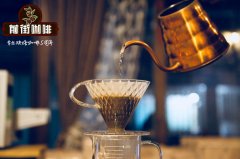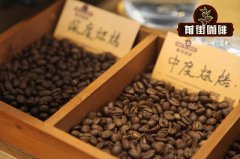Professional coffee roasting | discussion and demonstration of hot air roasting (using SR500 coffee roaster)

Professional coffee knowledge exchange more coffee bean information please follow the coffee workshop (Wechat official account cafe_style)
Standing on the shoulders of many giants, I figured out several reasons.
You can think of a floating fan like SR500 as a hot fan of single bubble bed, so you can use the characteristics of bubbling bed to think about how to use it (short time, large air volume, hot air temperature range of 200mur240 degrees)
When SR500 is transformed into fluid bed, it can be baked according to the characteristics advocated by Sivetz (hot air + contact heat between bean and bean, hot air temperature range is 232Murray 278 degrees).
Because the air weight ratio (ABR) of the roller hot fan is much lower than that of the bubble bed/ fluid bed, the required hot air temperature is also much higher than the above 2. The air temperature of the industrial large roller hot fan can reach more than 560C.
Patent literature is easier to read than academic literature and has high practical value. About hot air baked beans, these two articles are a treasure trove.
1974-11-11 1976-06-22 Michael Sivetz Coffee roasting system (https://patents.google.com/patent/US3964175A/en)
1986-06-11 EP0183878A1 James Patrick / MahlmannLawrence/ ScherSteven/ Mark Schecter Controlled coffee roasting (https://patents.google.com/patent/EP0183878A1/en)
This table in US Patent EP0183878A1 Controlled coffee roasting is very interesting, but of course it is based on comparing baked beans as a food processing process, rather than the boutique coffee emphasized now.
What's interesting is that the effect of using SR500 to simulate bubbling bed is very similar.
Using washing beans to verify the difference in flavor and taste between SR500 bubbling bed and Fluid bed, the baking time difference is about one and a half minutes. The logic of fire control is to start a small fire, turn white to medium heat, turn brown to big fire, and the wind is in principle smaller and smaller. All of them are fully developed, and the scorched taste of dry distillation is not obvious, but the body smoothness and sweetness of Fluid bed are much better, and bubbling bed tastes more angular.
When SR500 bakes sun-dried beans, it will inadvertently smell of grass. Sun-dried beans, which are relatively easy to dehydrate when baking, are the door of SR500 baking, which is a bit of a surprise at first (many of you have the same experience with the same reaction).
On the basis of rethinking the hot air baking, the SR500 or SR500+ Shen inner cup is defined as single bubbling bed roaster, and the SR500+ inner cup + slope kit is defined as fluid bed roaster, with reference to the air temperature referred to in the corresponding patent literature, and then applied to SR500 according to the past empirical records and the inlet air temperature curves of many kinds of hot air roasters. In the previous part, the empirical OK with washing bourbon is used to preliminarily confirm that there should be no deviation in the basic principle of my cognition. What about the beans in the sun? Will there be a nasty smell of grass?
Each take 70 grams of purple wind chimes in the sun, and bake the beans at the end of an explosion. The logic of fire control is the same as washing beans with water. It is the beginning of a small fire, medium heat when turning white, and big fire when turning brown. In principle, the wind is getting smaller and smaller. After the start of an explosion, the wind will increase depending on the situation. As the wisdom teeth just removed that night can not be tested by cup, every other day, each hand into a pot to try, from high temperature to coffee to room temperature, the flavor is completely developed, no fishy smell, bubbling bed dry distillation flavor is more obvious, a little bit of bitterness back sweet, but Fluid bed except for no bitterness, the flavor level is much better, the sweet feeling is also much better.
In order to do these verification, disassemble and disassemble the inner cup and kit of SR500, I am afraid that the original medium cup can not stand the torment of me. After this empirical process, in principle, the ramp kit will be fixed in the inner cup and will no longer be disassembled and assembled frequently.
Comparing the curves of bubbling bed and fluid bed, it can be found that under the same concept of fire control and wind control, the biggest difference due to different structure lies in the dehydration stage, and what is seen in the curve record is the difference in time. What is outside the curve is the difference in the heating condition of coffee beans. One is constantly turning over (bubbling bed) in the face of wind pressure, the same inlet air temperature and relatively small wind speed (compared with fluid bed). Its heating and dehydration will be much faster. The other is to take turns to face the wind pressure in a regular way and then soar, land, and slide to the bottom. In addition to being heated by hot wind, in the short period of time when beans are not blown, the main heat source comes from the heat conduction between beans, so compared with bubbling bed, the dehydration and heating of fluid bed will ease a lot (if you are interested in further understanding the patent document US3964715A:Coffee Roasting System of Michael Sivetz). After entering Mena, the difference between the two curves is not so great, mainly due to each other's temperature rise rate, as the bean temperature and exhaust air temperature become more and more close to become flat.
For more information about Fluid bed, please refer to the experience sharing of SR500 bean baking in a fluidized bed.
As for bubbling bed, this passage in the patent literature (1986-06-11 EP0183878A1 James Patrick / MahlmannLawrence/ ScherSteven/ Mark Schecter Controlled coffee roasting) is very important.
In a typical conventional commercial coffee roaster, the air to bean ratio is about 1.0 kg air (roasting atmosphere) / 1.0 kg roasting coffee beans. The air to bean ratio of the present method though, is preferably from 40.0 to 150.0 kg air/1.0 kg coffee beans. With the high air to bean ratio, the individual coffee beans are surrounded by an "envelope" of roasting atmosphere, contributing to the uniformity of the roasted coffee. The air to bean ratio for a fluidized bed is between 10.0 and 30.0 kg air/1.0 kg coffee beans. The inlet velocity of the roasting atmosphere needed to maintain a bubbling bed is also intermediate between the velocity in a conventional roaster and the roasting atmosphere velocity in a fluidized bed roaster. In a bubbling bed roaster, the velocity is on the order of 670 m/min to 1250 m/min compared to between 40 m/min and 46 m/min for a conventional roaster and on the order of 3660 m/min for fluidized bed roasting.
Important Notice :
前街咖啡 FrontStreet Coffee has moved to new addredd:
FrontStreet Coffee Address: 315,Donghua East Road,GuangZhou
Tel:020 38364473
- Prev

Difference Analysis and comparison of Flavor and taste of five techniques and four hand-brewed Coffee beans
Professional coffee knowledge exchange more coffee bean information please follow the coffee workshop (Wechat official account cafe_style) hand brewing methods are full of eyes, in the article we collect the five most common hand brewing methods on the Internet and briefly analyze their taste and differences, hoping to give reference to friends who have just learned to brew coffee, can also give old players new creative excitement, or
- Next

Professional coffee roasting| SR500 Coffee Roaster Experience Sharing
Professional coffee knowledge exchange More coffee bean information Please pay attention to coffee workshop (Weixin Official Accounts cafe_style) fluid bed type (fluid bed) bean dryer design mechanism can mainly have the following two kinds of source: https://upload.wikimedia.org/wikipedia/en/a/af/Fluidized_Bed.jpg one is oblique side air intake (left of the above picture), using airflow
Related
- Beginners will see the "Coffee pull flower" guide!
- What is the difference between ice blog purified milk and ordinary milk coffee?
- Why is the Philippines the largest producer of crops in Liberia?
- For coffee extraction, should the fine powder be retained?
- How does extracted espresso fill pressed powder? How much strength does it take to press the powder?
- How to make jasmine cold extract coffee? Is the jasmine + latte good?
- Will this little toy really make the coffee taste better? How does Lily Drip affect coffee extraction?
- Will the action of slapping the filter cup also affect coffee extraction?
- What's the difference between powder-to-water ratio and powder-to-liquid ratio?
- What is the Ethiopian local species? What does it have to do with Heirloom native species?

